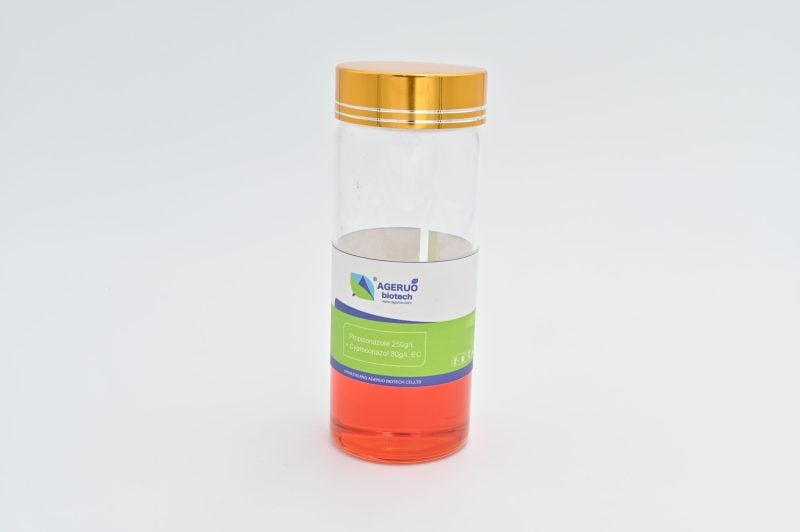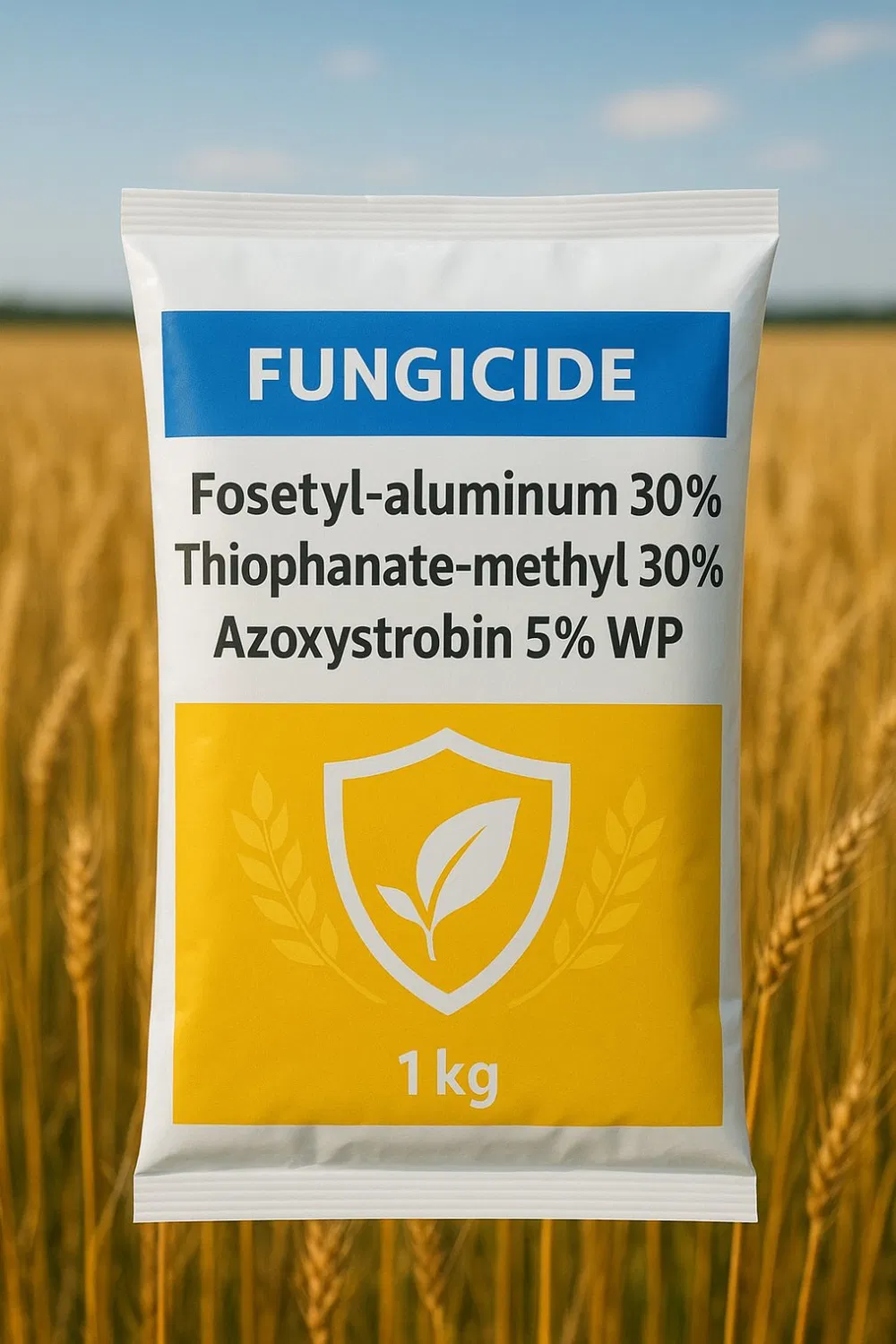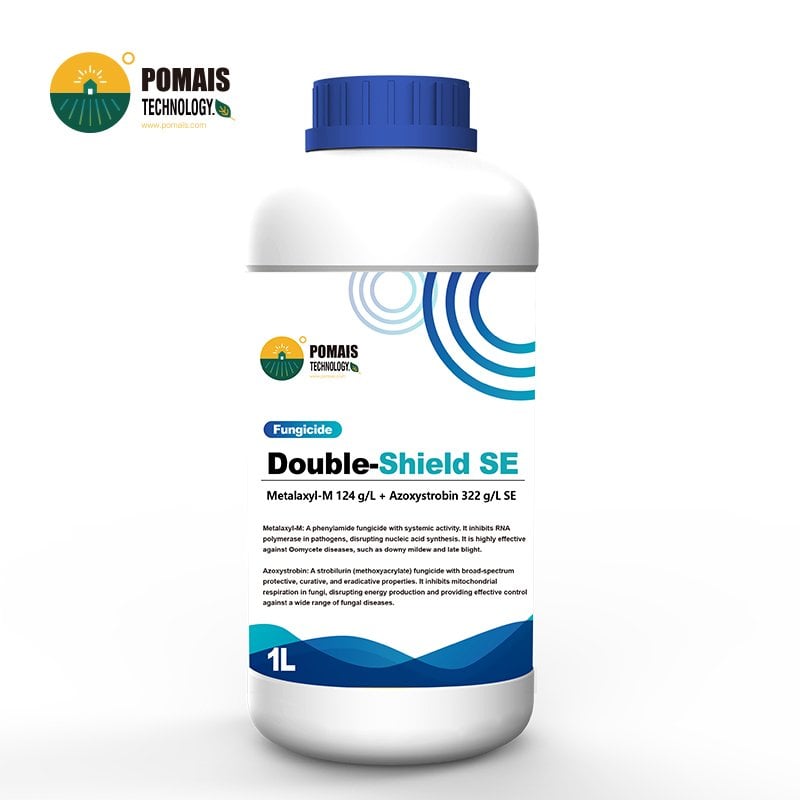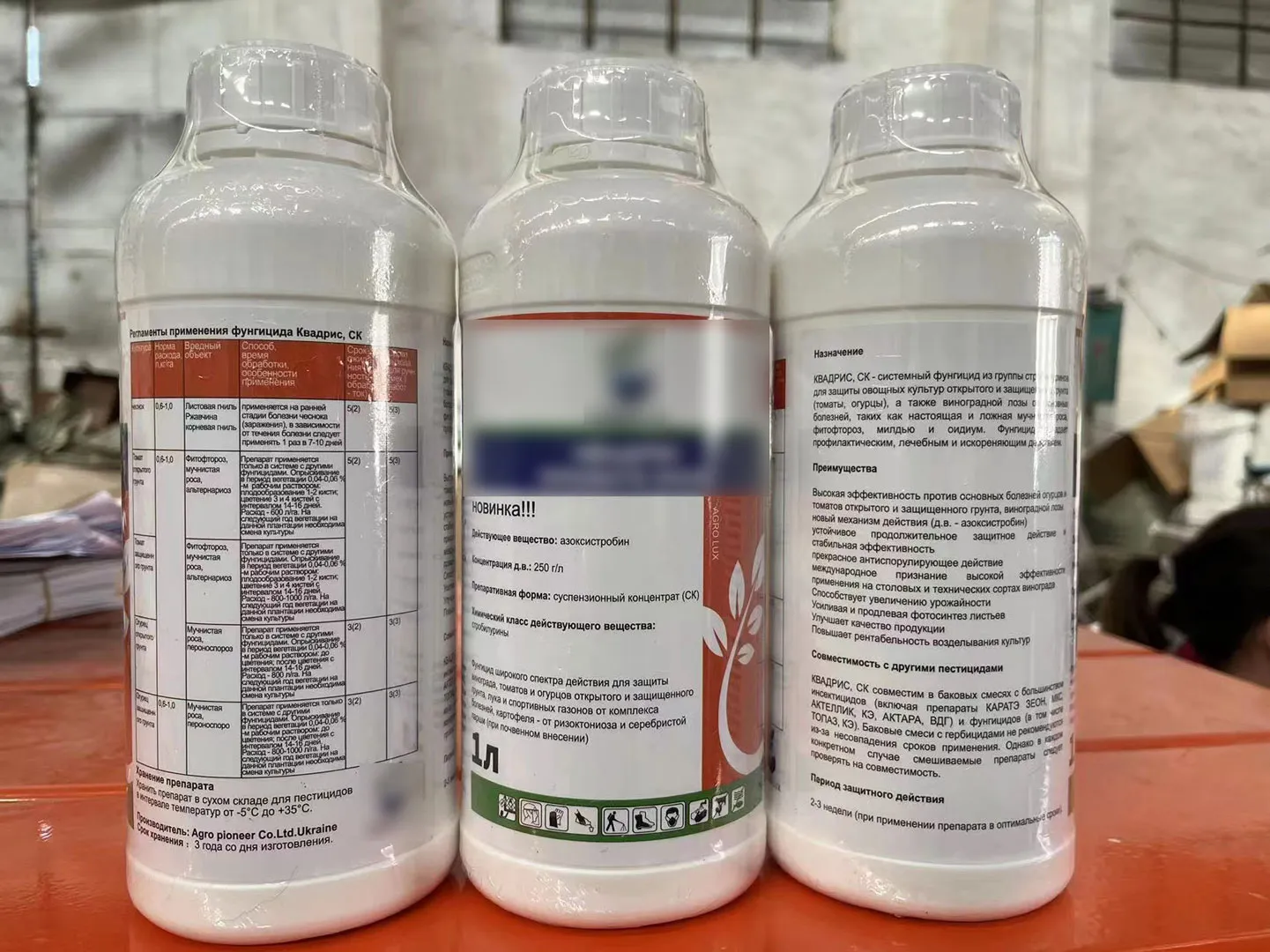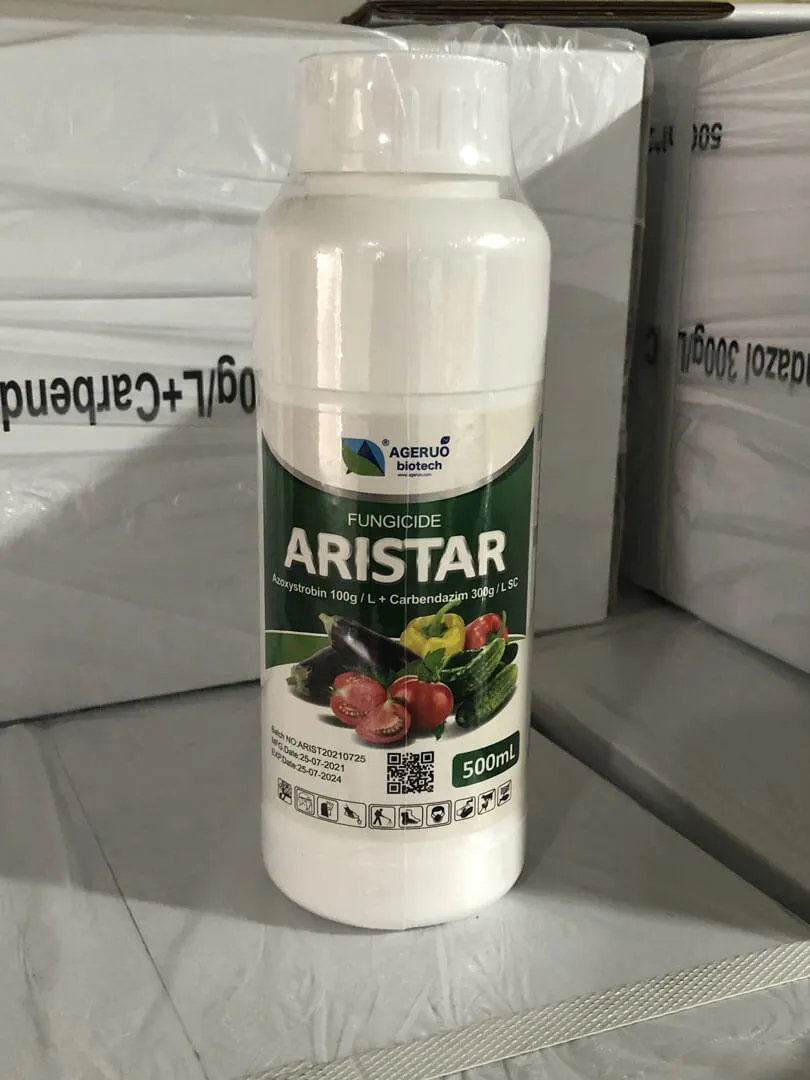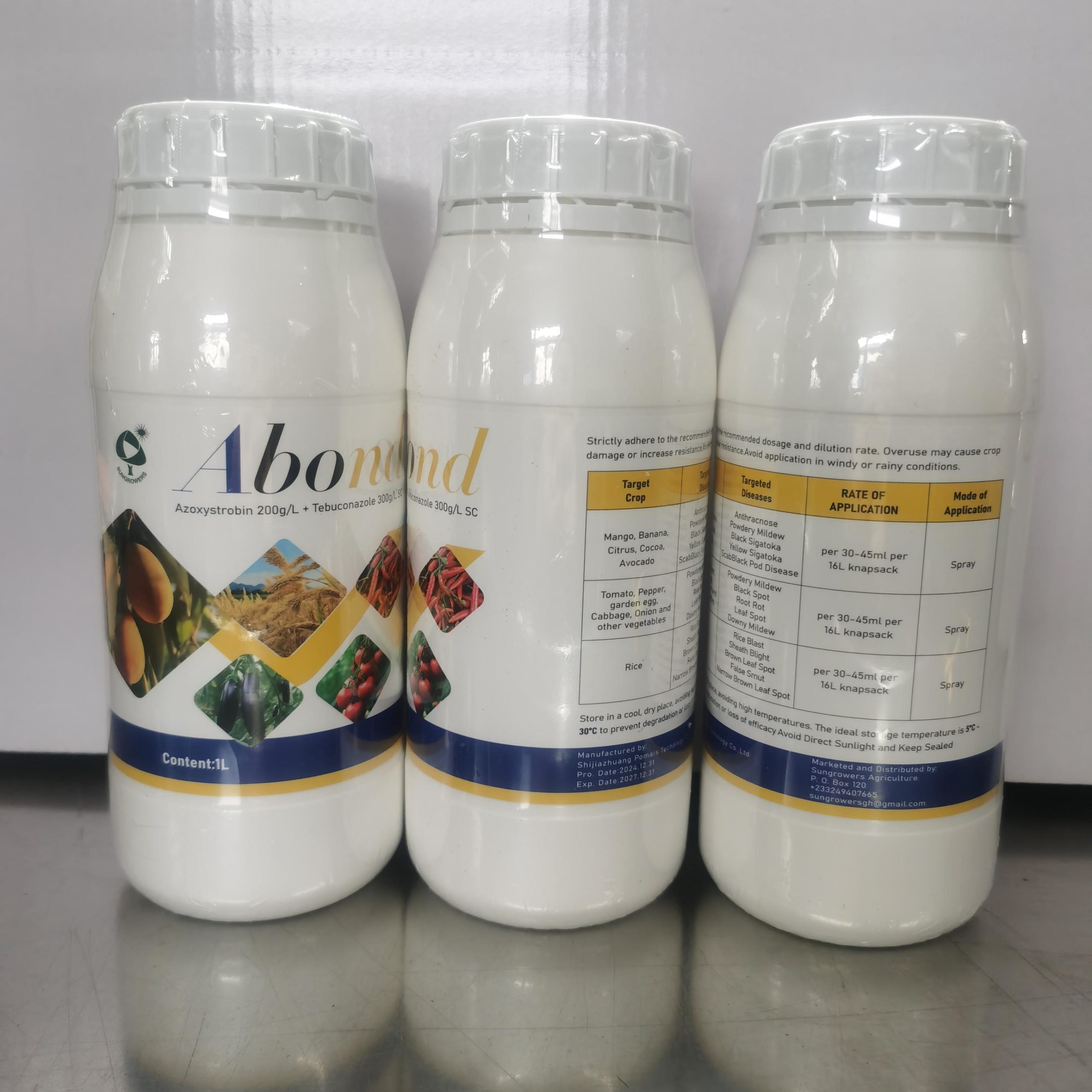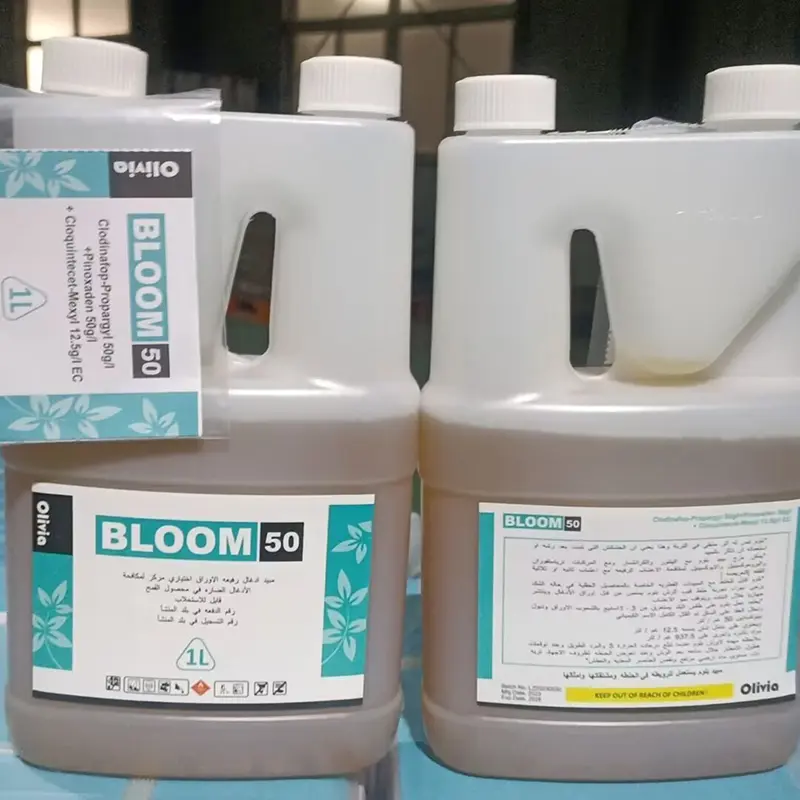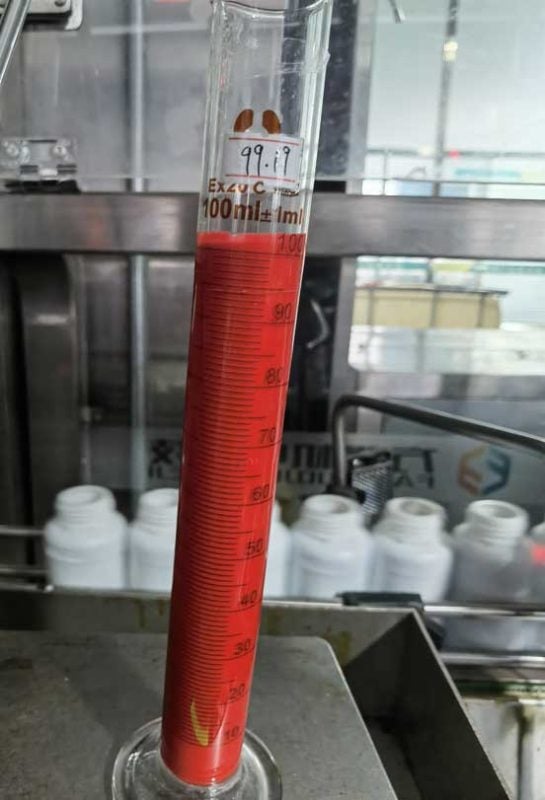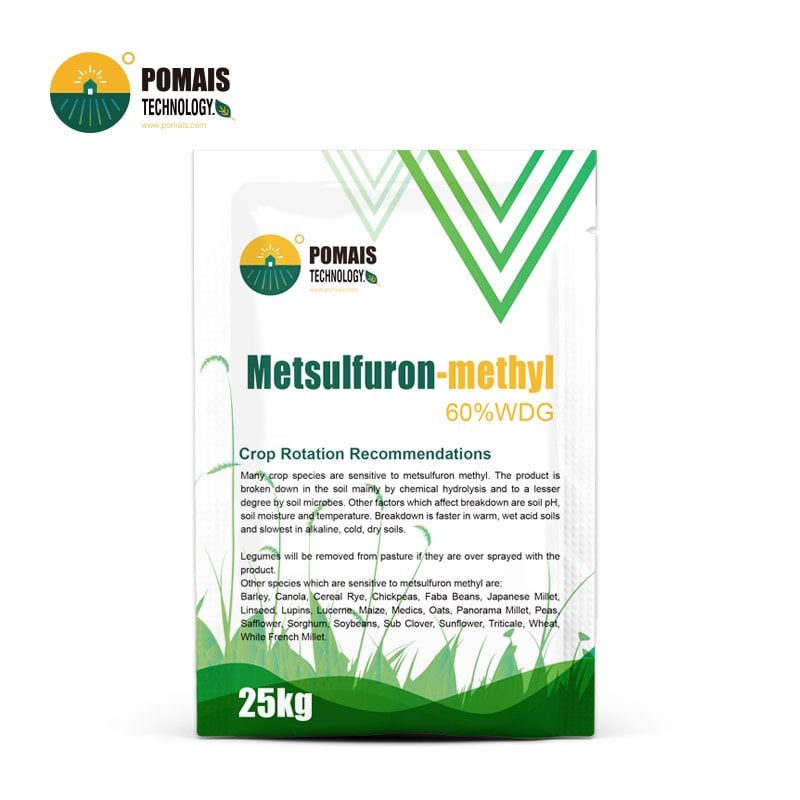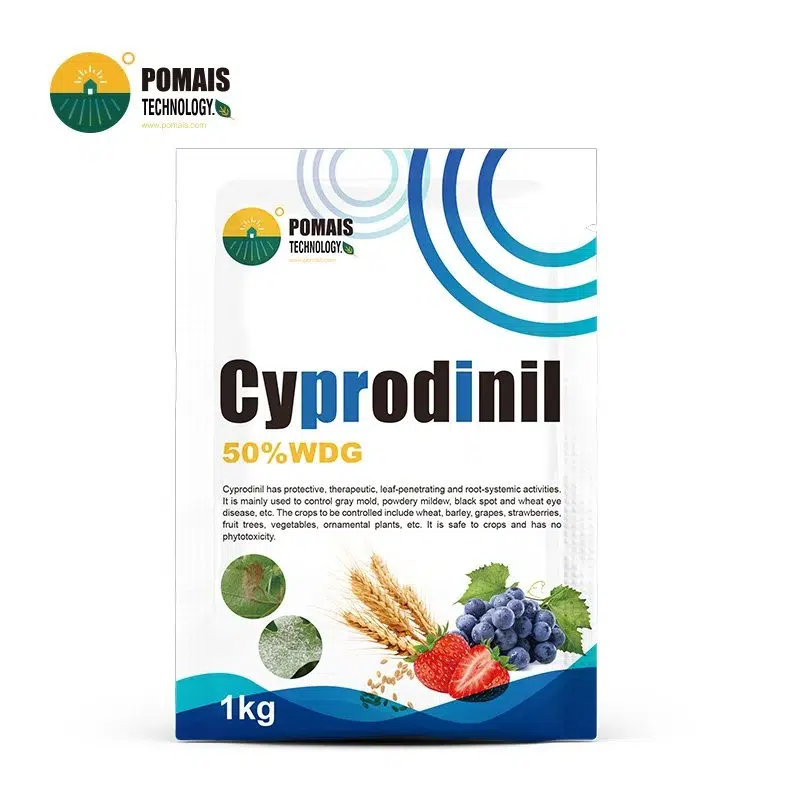Cyproconazole 80g/L+ Azoxystrobin 200g/L SC Fungicide
Maximize Cereal Crop Health and Yields with Dual-Action Fungicidal Power
Crop diseases such as leaf rust, powdery mildew, and downy mildew pose significant threats to cereal crops, severely impacting yield and grain quality.
Cyproconazole 80g/L + Azoxystrobin 200g/L SC provides a powerful dual-mode defense: it combines systemic protection against internal infections and contact curative action for existing outbreaks. Specially designed for wheat, barley, corn, and other cereal crops, this premium SC formulation not only protects the critical flag leaf but also helps crops withstand heat and environmental stress, leading to healthier plants and higher yields.
Trusted across more than 56 countries, it is your strategic partner for sustainable, profitable agriculture.
- Designed for Professional Buyers & Bulk Orders
- This product is available for business purchase and large-scale distribution.
- We support custom packaging, labeling, and formulation to meet your market needs.
- Let’s build your brand together.

About Cyproconazole 80g/L+ Azoxystrobin 200g/L SC Fungicide
About Cyproconazole 80g/L+ Azoxystrobin 200g/L SC Fungicide
| Product Name | Cyproconazole + Azoxystrobin (fungicide) |
|---|---|
| Active Ingredients | Cyproconazole 80g/L + Azoxystrobin 200g/L |
| CAS Numbers | Cyproconazole: 94361-06-5, Azoxystrobin: 131860-33-8 |
| Molecular Formulas | Cyproconazole: C15H18ClN3O, Azoxystrobin: C22H17N3O5 |
| Target Diseases | Leaf spots, rust, powdery mildew, downy mildew, and other fungal diseases |
| Applicable Uses | Primarily used in cereals such as wheat, barley, and rice |
| Dosage | Apply at a rate of 1 ml per liter of water during the flag leaf stage |
| Mode of Action | Systemic fungicide; Cyproconazole inhibits fungal cell wall biosynthesis, while Azoxystrobin disrupts mitochondrial respiration |
| Formulation Type | Suspension Concentrate (SC) |
| Benefits | Protects flag leaf, reduces heat stress, maintains leaf health and greenness, and enhances yield potential |
| Packaging Types | Available in 1L, 5L, and 20L containers |
| Company Strengths | POMAIS offers high-quality formulations, positive feedback from international markets, supports OEM/ODM services, and provides customized packaging solutions |
We provide Cyproconazole + Azoxystrobin SC in multiple packaging options to suit various agricultural scales, including bulk drums for large farms and smaller bottles for targeted applications. Each product is manufactured under ISO 9001 standards, guaranteeing consistency and quality.
This product has been successfully exported to over 56 countries, including Iraq, Syria, Indonesia, and Venezuela, and has garnered positive feedback for its effectiveness in improving crop yields and resilience.
For more details on Cyproconazole + Azoxystrobin SC or to inquire about specific application techniques, please feel free to contact us. Our team is dedicated to supporting your agricultural success with tailored solutions that meet your specific crop needs.
Mode of Action: Double Target Attack for Superior Disease Control
- Cyproconazole (DMI fungicide): Inhibits ergosterol biosynthesis in fungal membranes, causing cell disintegration. Provides deep, systemic protection, moving within plant tissues to stop fungal spread.
- Azoxystrobin (Strobilurin fungicide): Blocks mitochondrial respiration in fungal cells by inhibiting the Qo site of the cytochrome bc1 complex, cutting off the pathogen’s energy production.
Combined Power:
- Systemic action prevents the progression of internal infections.
- Contact and preventive action halts spore germination and secondary infections.
This synergistic mechanism provides preventive, curative, and residual disease control, reducing pathogen adaptation and resistance risks.
Target Crops and Diseases
Suitable for a wide range of cereal crops and beyond:
- Wheat: Leaf rust, powdery mildew, Septoria leaf spot
- Barley: Scald, net blotch, stripe rust
- Corn (Maize): Gray leaf spot, northern corn leaf blight
- Rice: Sheath blight, brown spot
- Sorghum: Anthracnose, leaf blight
Also applicable to certain vegetable crops under label extension programs.
Benefits Per Crop:
- Healthier flag leaves for better grain filling.
- Enhanced resistance to environmental stress.
- Improved harvest quality and grain weight.
Applications and Benefits by Crop
| Crop | Target Diseases | Application Benefits |
|---|---|---|
| Wheat | Leaf rust, Powdery mildew | Ensures healthier flag leaf, improving photosynthesis and yield. |
| Barley | Leaf blight, Scald | Reduces disease stress, supports plant vigor and grain quality. |
| Corn | Gray leaf spot, Northern corn leaf blight | Enhances resistance to fungal pathogens, ensuring better cob quality. |
Detailed Usage Instructions
- Dosage: For effective coverage, mix 1 ml of Cyproconazole + Azoxystrobin per liter of water. The suspension should be evenly sprayed over the foliage, especially focusing on the flag leaf, which is pivotal for grain development.
- Timing: The ideal time for application is at 65-75 DAS (Days After Sowing), during the flag leaf stage. This is the period when the flag leaf plays a crucial role in grain filling, contributing approximately 55% to the overall grain development.
- Application Method: For uniform coverage, use a foliar spray approach. This ensures maximum contact with the leaf surface, which enhances absorption and effectiveness.
Advantages of Using Cyproconazole + Azoxystrobin
- Enhanced Disease Control: Provides comprehensive protection against both broadleaf and grass-specific pathogens, making it versatile across different cereals.
- Stress Resistance: By protecting the flag leaf, the formulation mitigates the impact of heat stress, ensuring the plant maintains photosynthetic activity under adverse conditions.
- Yield Optimization: The synergistic effects of Cyproconazole and Azoxystrobin facilitate grain filling and improve yield quality significantly.
- Broad-Spectrum Activity: With two active ingredients targeting different parts of the fungal cell structure, the formulation reduces the risk of resistance development, ensuring long-term effectiveness.
Field Trial Data
Region: Central Europe (Germany, France)
- Wheat (Leaf Rust): 92% disease reduction compared to untreated control.
- Barley (Scald): Yield increase of 1.7 tons/hectare with two applications.
- Corn (Gray Leaf Spot): 88% lesion area reduction at 30 days post-treatment.
Application Timing: At the flag leaf stage for maximum protection during grain filling.
Resistance Management Guidelines
- Limit continuous applications to no more than two sprays per season.
- Rotate with other fungicides having different modes of action, such as SDHI or multi-site inhibitors.
- Implement Integrated Disease Management (IDM) practices including crop rotation, field sanitation, and resistant varieties.
Proper stewardship extends the product’s effectiveness and supports sustainable farming.
Cyproconazole Mixed Formulations
The following Cyproconazole mixed formulations are specially designed to offer tailored protection for a variety of crops, addressing unique disease challenges with a focus on systemic action and broad-spectrum disease control.
Available Mixed Formulations
| Formulation | Dosage Form | Primary Benefits |
|---|---|---|
| Cyproconazole 160g/L + Trifloxystrobin 375g/L SC | SC | Provides enhanced control over leaf spot and rust diseases, especially in cereals and grapes. |
| Cyproconazole 20% + Trifloxystrobin 40% WDG | WDG | Offers long-lasting residual protection and is effective in managing powdery mildew and anthracnose. |
| Cyproconazole 80g/L + Picoxystrobin 200g/L SC | SC | Ideal for blight control and crop vitality, particularly in corn and barley. |
Key Formulations and Their Specific Uses
1. Cyproconazole 160g/L + Trifloxystrobin 375g/L SC
- Description: This formulation combines the systemic action of Cyproconazole with the powerful strobilurin properties of Trifloxystrobin. It provides dual-action control over diseases, including leaf rust, powdery mildew, and net blotch.
- Crops: Suitable for cereals (wheat, barley), grapes, and vegetables (tomatoes, cucumbers).
- Benefits: This combination improves disease resistance in leafy crops and supports plant vigor by reducing fungal pressure.
2. Cyproconazole 20% + Trifloxystrobin 40% WDG
- Description: Formulated as a water-dispersible granule, this product is designed for ease of application and long-lasting protection. The WDG form allows for rapid dissolution in water, providing effective coverage for crops.
- Crops: Primarily used for grapes, citrus, and vegetables. Particularly effective against downy mildew, early blight, and rust.
- Benefits: Provides superior adhesion to the leaf surface, making it ideal for crops with dense foliage. The combination helps delay fungal resistance development and offers extended residual protection.
3. Cyproconazole 80g/L + Picoxystrobin 200g/L SC
- Description: This SC formulation blends Cyproconazole with Picoxystrobin, another potent strobilurin, providing targeted control for diseases like leaf blight, stem rust, and anthracnose.
- Crops: Best suited for corn, barley, and sorghum, where it manages a wide array of fungal diseases.
- Benefits: The combination supports overall crop health and vitality, especially during peak growing stages. The systemic movement within the plant enhances stress tolerance and yield quality.
Advantages of the Mixed Formulations
- Broader Disease Spectrum: Each formulation targets specific diseases prevalent in the respective crops, ensuring tailored disease management.
- Resistance Management: By combining Cyproconazole with other active strobilurins, these formulations reduce the risk of fungicide resistance, promoting sustainable disease control.
- Enhanced Systemic Action: All formulations are designed for systemic absorption, ensuring thorough protection throughout the plant, including new growth.
- Customized Application: The diversity in formulations allows growers to select products based on their specific crop needs, weather conditions, and disease pressures.
These formulations are crafted to cater to diverse agricultural challenges, providing effective and sustainable disease management solutions. For more information on each of these specific formulations or to place an order, please contact us directly. We are committed to offering tailored solutions to meet your crop protection needs and enhance your agricultural productivity.
Packaging Options
- Retail Packs: 1L, 5L, 20L HDPE bottles
- Bulk Supply: 200L drums, 1000L IBC tanks
OEM Services:
- Custom branding and multilingual label printing.
- Anti-counterfeit QR codes and traceability options.
- Full regulatory registration support for global markets.
Frequently Asked Questions
Q1: Can this fungicide be applied during flowering?
A: Yes, it is safe for use during early flowering stages. However, avoid spraying during peak pollinator activity (early morning or late afternoon).
Q2: How long does the residual effect last?
A: Typically provides 14–21 days of residual protection under normal environmental conditions.
A: No significant phytotoxicity reported at recommended rates. Always adhere to label instructions.
Q4: Can it be mixed with foliar fertilizers?
A: Generally compatible with most foliar feeds. Conduct a jar test if uncertain about specific combinations.
| Product Name | Cyproconazole + Azoxystrobin (fungicide) |
|---|---|
| Active Ingredients | Cyproconazole 80g/L + Azoxystrobin 200g/L |
| CAS Numbers | Cyproconazole: 94361-06-5, Azoxystrobin: 131860-33-8 |
| Molecular Formulas | Cyproconazole: C15H18ClN3O, Azoxystrobin: C22H17N3O5 |
| Target Diseases | Leaf spots, rust, powdery mildew, downy mildew, and other fungal diseases |
| Applicable Uses | Primarily used in cereals such as wheat, barley, and rice |
| Dosage | Apply at a rate of 1 ml per liter of water during the flag leaf stage |
| Mode of Action | Systemic fungicide; Cyproconazole inhibits fungal cell wall biosynthesis, while Azoxystrobin disrupts mitochondrial respiration |
| Formulation Type | Suspension Concentrate (SC) |
| Benefits | Protects flag leaf, reduces heat stress, maintains leaf health and greenness, and enhances yield potential |
| Packaging Types | Available in 1L, 5L, and 20L containers |
| Company Strengths | POMAIS offers high-quality formulations, positive feedback from international markets, supports OEM/ODM services, and provides customized packaging solutions |
We provide Cyproconazole + Azoxystrobin SC in multiple packaging options to suit various agricultural scales, including bulk drums for large farms and smaller bottles for targeted applications. Each product is manufactured under ISO 9001 standards, guaranteeing consistency and quality.
This product has been successfully exported to over 56 countries, including Iraq, Syria, Indonesia, and Venezuela, and has garnered positive feedback for its effectiveness in improving crop yields and resilience.
For more details on Cyproconazole + Azoxystrobin SC or to inquire about specific application techniques, please feel free to contact us. Our team is dedicated to supporting your agricultural success with tailored solutions that meet your specific crop needs.
Mode of Action: Double Target Attack for Superior Disease Control
- Cyproconazole (DMI fungicide): Inhibits ergosterol biosynthesis in fungal membranes, causing cell disintegration. Provides deep, systemic protection, moving within plant tissues to stop fungal spread.
- Azoxystrobin (Strobilurin fungicide): Blocks mitochondrial respiration in fungal cells by inhibiting the Qo site of the cytochrome bc1 complex, cutting off the pathogen’s energy production.
Combined Power:
- Systemic action prevents the progression of internal infections.
- Contact and preventive action halts spore germination and secondary infections.
This synergistic mechanism provides preventive, curative, and residual disease control, reducing pathogen adaptation and resistance risks.
Target Crops and Diseases
Suitable for a wide range of cereal crops and beyond:
- Wheat: Leaf rust, powdery mildew, Septoria leaf spot
- Barley: Scald, net blotch, stripe rust
- Corn (Maize): Gray leaf spot, northern corn leaf blight
- Rice: Sheath blight, brown spot
- Sorghum: Anthracnose, leaf blight
Also applicable to certain vegetable crops under label extension programs.
Benefits Per Crop:
- Healthier flag leaves for better grain filling.
- Enhanced resistance to environmental stress.
- Improved harvest quality and grain weight.
Applications and Benefits by Crop
| Crop | Target Diseases | Application Benefits |
|---|---|---|
| Wheat | Leaf rust, Powdery mildew | Ensures healthier flag leaf, improving photosynthesis and yield. |
| Barley | Leaf blight, Scald | Reduces disease stress, supports plant vigor and grain quality. |
| Corn | Gray leaf spot, Northern corn leaf blight | Enhances resistance to fungal pathogens, ensuring better cob quality. |
Detailed Usage Instructions
- Dosage: For effective coverage, mix 1 ml of Cyproconazole + Azoxystrobin per liter of water. The suspension should be evenly sprayed over the foliage, especially focusing on the flag leaf, which is pivotal for grain development.
- Timing: The ideal time for application is at 65-75 DAS (Days After Sowing), during the flag leaf stage. This is the period when the flag leaf plays a crucial role in grain filling, contributing approximately 55% to the overall grain development.
- Application Method: For uniform coverage, use a foliar spray approach. This ensures maximum contact with the leaf surface, which enhances absorption and effectiveness.
Advantages of Using Cyproconazole + Azoxystrobin
- Enhanced Disease Control: Provides comprehensive protection against both broadleaf and grass-specific pathogens, making it versatile across different cereals.
- Stress Resistance: By protecting the flag leaf, the formulation mitigates the impact of heat stress, ensuring the plant maintains photosynthetic activity under adverse conditions.
- Yield Optimization: The synergistic effects of Cyproconazole and Azoxystrobin facilitate grain filling and improve yield quality significantly.
- Broad-Spectrum Activity: With two active ingredients targeting different parts of the fungal cell structure, the formulation reduces the risk of resistance development, ensuring long-term effectiveness.
Field Trial Data
Region: Central Europe (Germany, France)
- Wheat (Leaf Rust): 92% disease reduction compared to untreated control.
- Barley (Scald): Yield increase of 1.7 tons/hectare with two applications.
- Corn (Gray Leaf Spot): 88% lesion area reduction at 30 days post-treatment.
Application Timing: At the flag leaf stage for maximum protection during grain filling.
Resistance Management Guidelines
- Limit continuous applications to no more than two sprays per season.
- Rotate with other fungicides having different modes of action, such as SDHI or multi-site inhibitors.
- Implement Integrated Disease Management (IDM) practices including crop rotation, field sanitation, and resistant varieties.
Proper stewardship extends the product’s effectiveness and supports sustainable farming.
Cyproconazole Mixed Formulations
The following Cyproconazole mixed formulations are specially designed to offer tailored protection for a variety of crops, addressing unique disease challenges with a focus on systemic action and broad-spectrum disease control.
Available Mixed Formulations
| Formulation | Dosage Form | Primary Benefits |
|---|---|---|
| Cyproconazole 160g/L + Trifloxystrobin 375g/L SC | SC | Provides enhanced control over leaf spot and rust diseases, especially in cereals and grapes. |
| Cyproconazole 20% + Trifloxystrobin 40% WDG | WDG | Offers long-lasting residual protection and is effective in managing powdery mildew and anthracnose. |
| Cyproconazole 80g/L + Picoxystrobin 200g/L SC | SC | Ideal for blight control and crop vitality, particularly in corn and barley. |
Key Formulations and Their Specific Uses
1. Cyproconazole 160g/L + Trifloxystrobin 375g/L SC
- Description: This formulation combines the systemic action of Cyproconazole with the powerful strobilurin properties of Trifloxystrobin. It provides dual-action control over diseases, including leaf rust, powdery mildew, and net blotch.
- Crops: Suitable for cereals (wheat, barley), grapes, and vegetables (tomatoes, cucumbers).
- Benefits: This combination improves disease resistance in leafy crops and supports plant vigor by reducing fungal pressure.
2. Cyproconazole 20% + Trifloxystrobin 40% WDG
- Description: Formulated as a water-dispersible granule, this product is designed for ease of application and long-lasting protection. The WDG form allows for rapid dissolution in water, providing effective coverage for crops.
- Crops: Primarily used for grapes, citrus, and vegetables. Particularly effective against downy mildew, early blight, and rust.
- Benefits: Provides superior adhesion to the leaf surface, making it ideal for crops with dense foliage. The combination helps delay fungal resistance development and offers extended residual protection.
3. Cyproconazole 80g/L + Picoxystrobin 200g/L SC
- Description: This SC formulation blends Cyproconazole with Picoxystrobin, another potent strobilurin, providing targeted control for diseases like leaf blight, stem rust, and anthracnose.
- Crops: Best suited for corn, barley, and sorghum, where it manages a wide array of fungal diseases.
- Benefits: The combination supports overall crop health and vitality, especially during peak growing stages. The systemic movement within the plant enhances stress tolerance and yield quality.
Advantages of the Mixed Formulations
- Broader Disease Spectrum: Each formulation targets specific diseases prevalent in the respective crops, ensuring tailored disease management.
- Resistance Management: By combining Cyproconazole with other active strobilurins, these formulations reduce the risk of fungicide resistance, promoting sustainable disease control.
- Enhanced Systemic Action: All formulations are designed for systemic absorption, ensuring thorough protection throughout the plant, including new growth.
- Customized Application: The diversity in formulations allows growers to select products based on their specific crop needs, weather conditions, and disease pressures.
These formulations are crafted to cater to diverse agricultural challenges, providing effective and sustainable disease management solutions. For more information on each of these specific formulations or to place an order, please contact us directly. We are committed to offering tailored solutions to meet your crop protection needs and enhance your agricultural productivity.
Packaging Options
- Retail Packs: 1L, 5L, 20L HDPE bottles
- Bulk Supply: 200L drums, 1000L IBC tanks
OEM Services:
- Custom branding and multilingual label printing.
- Anti-counterfeit QR codes and traceability options.
- Full regulatory registration support for global markets.
Frequently Asked Questions
Q1: Can this fungicide be applied during flowering?
A: Yes, it is safe for use during early flowering stages. However, avoid spraying during peak pollinator activity (early morning or late afternoon).
Q2: How long does the residual effect last?
A: Typically provides 14–21 days of residual protection under normal environmental conditions.
A: No significant phytotoxicity reported at recommended rates. Always adhere to label instructions.
Q4: Can it be mixed with foliar fertilizers?
A: Generally compatible with most foliar feeds. Conduct a jar test if uncertain about specific combinations.
Related Products
Latest News

